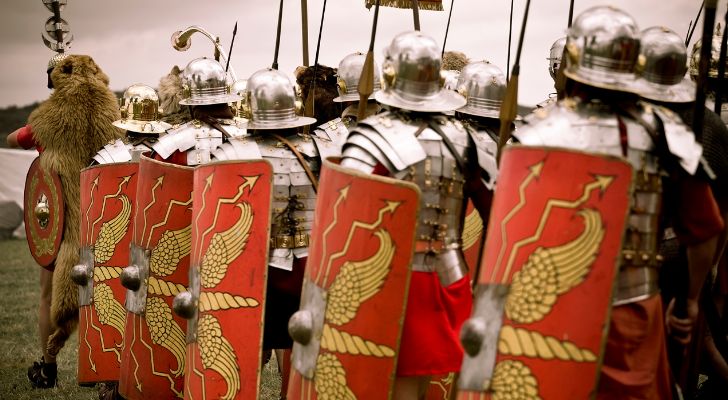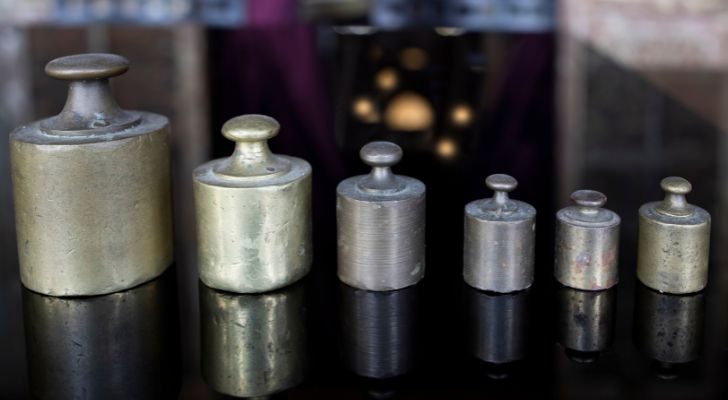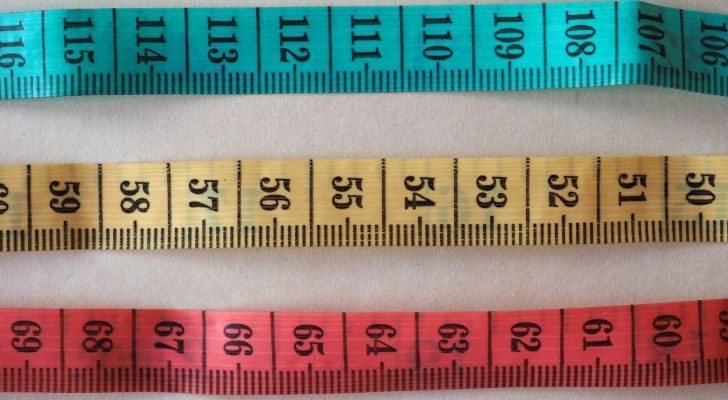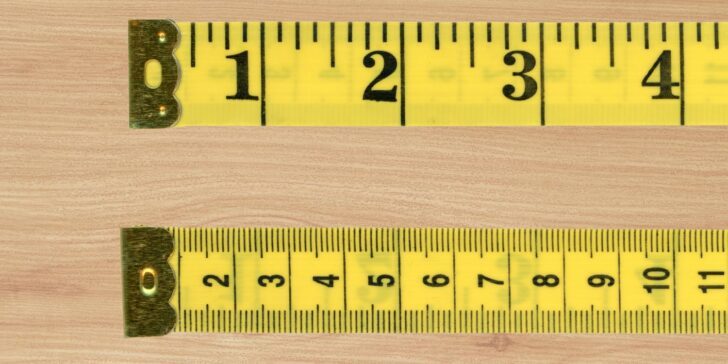Give ’em an inch and they’ll take a mile – but how did we settle on inches and miles? The history of measurements is a long, confusing road.
Many early measurements were based on whatever was at hand: body parts, seeds, or animals.
Obviously, as different measurement methods came about, there came a need for standardization. How was this accomplished? Read on!
From feet to furlongs.

To consider the origin of Imperial units such as inches and miles, let’s start with an ordinary measurement: the foot.
The Roman foot, called a “pes” (singular) or “pedes” (plural), was a basic unit of measurement for the Roman Empire. Words including “pedestrian” and “pedometer” spring from this.
The foot was the basis for other measurements. The inch came from the Old English “ince,” which came from the Latin “unicia” meaning “one-twelfth,” indicating it was 1/12th of a Roman foot.
Another foot-based measurement was the mile. The Romans noted that the two-step pace of a marching man was about five feet.
One thousand paces, or 5,000 feet, became their mile, which they called “milia passuum,” meaning 1,000 paces. The word “mile” comes from this.
The unit of measure on Saxon farms was the furrow-long, or furlong, the distance that a team of oxen could pull a plow before needing to rest. The furlong equaled 660 feet.
Under Queen Elizabeth I, Parliament standardized the mile in 1592. Because 5,000 feet is not easily divided by 660-foot furlongs, the mile was standardized to 5,280 feet, precisely eight furlongs.
Inching towards standardization.

The problem with many measurements was that they varied from place to place. Over the years, many attempts were made at standardization.
Charlemagne gave standardization a try in the early 800s, but everything fell apart when the realm disintegrated.
In 1215, the Magna Carta stipulated that standard measurements be instigated throughout England, but there was no enforcement.
Around 1150 A.D., King David I of Scotland defined the Scottish inch as the width of an average man’s thumb, measured at the base of the thumbnail.
An early Anglo-Saxon measure of length was the barleycorn because these seeds are uniform in size. In 1324 A.D., King Edward II of England decreed that the length of an inch equaled three grains of barley.
In 1495, King Henry VII of England established standards for measuring quantities, including the bushel, peck, gallon, and quart.
He made prototypes that showed precisely how big these measurements were, storing them in the town of Winchester. This became known as the Winchester Standards.
The British Weights and Measures Act of 1824 replaced the Winchester Standards, instigating the Imperial measurements, the basis of the system used in the U.S. today.
However, a study done in France in 1789 found around 800 different units of measure in use. A Swiss survey in 1838 showed that the foot denoted 37 different lengths.
This confusion sparked endless disputes. An international system was needed.
The scientification of standardization.

It took widespread social and scientific revolution to open the doors for the metric system.
In 1669, French astronomer Jean Picard became the first person to give an accurate measurement of the size of Earth.
A year later, French scientist Gabriel Mouton advocated replacing the tangled conglomeration of measurements with a simple decimal system based on the size of Earth.
He wrote a book outlining his method, but it took another century for the idea to catch on.
In 1790, a panel of five French scientists was appointed to find a solution. Just a year afterward, the National Assembly of France instigated a decimal-based standard of measurement.
The basic unit of length was equal to one ten-millionth of the distance from the North Pole to the equator.
It was called a “meter” from the Greek word “metron” meaning “measure.” Units for length, weight, and volume correlated, making conversion between them easy.
In 1798, France invited dignitaries from all over the world to come to France to learn about the new system. Because France and the United States were in the middle of a tiff over a treaty at the time, the U.S. was not invited.
So, U.S. President John Adams wanted to see if the new method would stand the test of time because France was in the middle of a revolution.
Because of the French Revolution, the populace was in an “out with the old, in with the new” frame of mind, receptive to new ideas. On the other hand, the turmoil made it difficult to enforce the new measurements.
In 1812, Napoleon Bonaparte revoked the metric system and tried to instigate a new hybrid method that incorporated some of each system.
When the Napoleonic Empire collapsed, the new French Assembly re-imposed the metric system in 1840, and soon most of France embraced it.
The magic of metric.

A series of conventions and treaties paved the way for the metric system worldwide….mostly. In 1875, an international convention resulted in the Treaty of the Meter, signed by 17 nations, including the U.S.
The metric system quickly caught on in most of these places, partly because colonialism was failing and countries throwing off the yoke of imperial rule welcomed the new international measuring system.
The scientific community was also quick to embrace it.
The General Conference on Weights and Measures committee agreed to meet in Paris every four years to review, revise, and update measurements.
By 1960, the new system, known as the metric system, was renamed the International System of Units, abbreviated as S.I.
In 1971, the U.S. National Bureau of Standards recommended the U.S. transition to metric over the next decade, resulting in Congress passing the Metric Conversion Act in 1975.
This encouraged the transition but made adherence voluntary, neglecting to stipulate the ten-year deadline.
As a result, inertia prevailed, and the U.S. remains one of only three countries still using the outdated Imperial system, along with Liberia and Myanmar.
Americans use many metrics in everyday life without a second thought.
Soda is sold by the liter. Nutritional labels measure the food by gram. Races are measured in meters and kilometers. Electricity is measured in kilowatts.
The United States has given at least an inch, even if it hasn’t gone the whole nine yards.
Meanwhile, the International System of Units is now the most widely used method of measurement, used throughout the world for everyday commerce, while being the only system used in scientific endeavors.


















